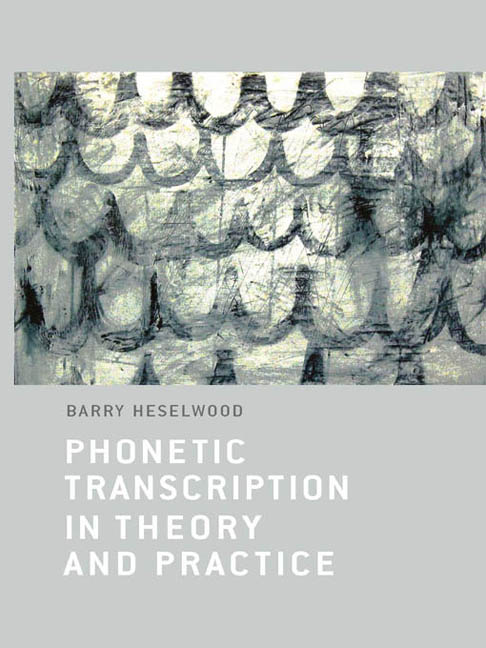Book contents
- Frontmatter
- Contents
- List of Tables
- List of Figures
- Preface
- Acknowledgements
- Introduction
- 1 Theoretical Preliminaries to Phonetic Notation and Transcription
- 2 Origins and Development of Phonetic Transcription
- 3 Phonetic Notation
- 4 Types of Transcription
- 5 Narrow Impressionistic Phonetic Transcription
- 6 Phonetic Transcription in Relation to Instrumental and Other Records
- 7 Uses of Phonetic Transcription
- Glossary
- References
- Appendix: Phonetic Notation Charts
- Index
7 - Uses of Phonetic Transcription
Published online by Cambridge University Press: 07 December 2017
- Frontmatter
- Contents
- List of Tables
- List of Figures
- Preface
- Acknowledgements
- Introduction
- 1 Theoretical Preliminaries to Phonetic Notation and Transcription
- 2 Origins and Development of Phonetic Transcription
- 3 Phonetic Notation
- 4 Types of Transcription
- 5 Narrow Impressionistic Phonetic Transcription
- 6 Phonetic Transcription in Relation to Instrumental and Other Records
- 7 Uses of Phonetic Transcription
- Glossary
- References
- Appendix: Phonetic Notation Charts
- Index
Summary
Introduction
In this brief survey of some of the main uses of phonetic transcription I will try to characterise the kinds of transcriptions employed in terms of the typological distinctions discussed in Chapters 3 and 4, the information they are providing and to whom, and the functions they are performing. I will start with those uses for which little or no knowledge of phonetic theory on the part of users is assumed.
Transcription in Dictionaries
There are many different sorts of dictionaries: monolingual and bilingual dictionaries, dictionaries of standard usage, dialect and slang dictionaries, pronouncing dictionaries and specialist technical dictionaries. It is in dictionaries that members of the general public are most likely to encounter phonetic transcriptions of one kind or another.
Transcriptions in dictionaries are generic transcriptions. They are aimed at users who are assumed to have no specialist knowledge of phonetics and for whom a transcription therefore does not represent an analysis into the categories of phonetic theory. However, the notation does embody some kind of analysis if only into categories of pre-theoretical sound-types. That is to say, users will have some notion of a difference between consonants and vowels, and different kinds of consonants and vowels, from their own experience of being literate language users. It is therefore meaningful for them to see the pronunciation of a word analysed into discrete symbols; this is analogous to an analysis of the spelling of words into letters. Keywords will tell them through ostensive definition which sound-types the symbols represent. For the average user, then, transcriptions in dictionaries are pseudo-transcriptions, although they will have been made by linguists for whom they are proper transcriptions because for them the notation has theoretical content. The status of a transcription as pseudo-or proper thus depends crucially on the phonetic knowledge of the user as well as on the intentions of the transcriber. Pronunciation dictionaries such as the English Pronouncing Dictionary (EPD) started by Daniel Jones, now in its eighteenth edition (Roach, Setter and Esling 2013), and the Longman Pronunciation Dictionary (Wells 2008) use IPA-based phonetic notation to provide broad systematic transcriptions of all entries, this being their raison d’être.
- Type
- Chapter
- Information
- Phonetic Transcription in Theory and Practice , pp. 251 - 264Publisher: Edinburgh University PressPrint publication year: 2013



